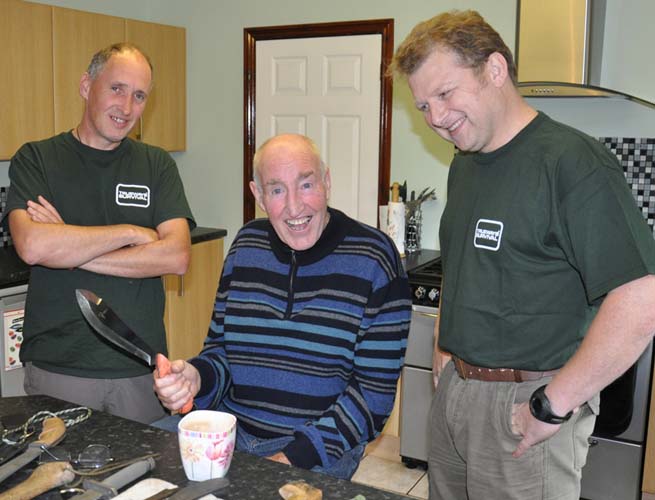Primitive Weapons For Hunting And Survival
The first weapon was probably a stone or a stick hurled at a target. From those humble beginnings, more effective weapons were created using the materials that nature provided. Primitive weapons for hunting, self-defense, war, and survival are of simple design, requiring only the tools that nature provides to make. Although primitive weapons seem weak in comparison to modern weapons, in the right hands, they can be deadly tools.
For ages before the invention of metallurgy and gunpowder, humans hunted and fought with weapons crafted from natural materials.
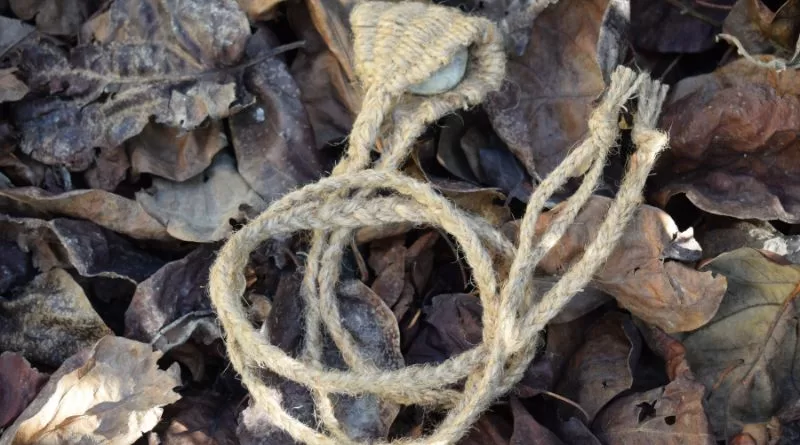
Stone
Stones can be found almost anywhere, pick up a stone and use it as a bludgeon or hammer. Throw a stone, and it turns into an instant projectile weapon. With practice a person could down a bird with a stone, knock a squirrel off a branch, or kill a lizard on a rock. Stones were most likely one of the first primitive weapons that man used for hunting and self-defense. With a little bit of work, stones can be shaped into tools.
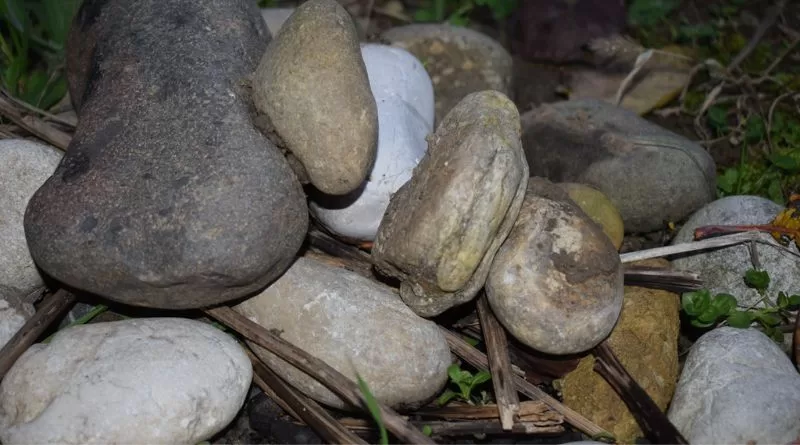
Shepherds Sling
Once man realized that a stone thrown at something was a viable way to hunt. He invented ways to throw stones further, with more velocity, power and accuracy.
A Sling is a long cord with a pouch in the center to hold the stone. Or it could be 2 cords with a pouch in the middle. One end of the cord will have a little loop to slip a finger through, the other end will have a knot to make sure the cord does not slip while swinging the sling.
There are various methods to using a sling, the overhead, the underhand swing, the side, or some just whip it in a circle once and let go. Practice the method that works best for you. Try to improve on aim before working on power.
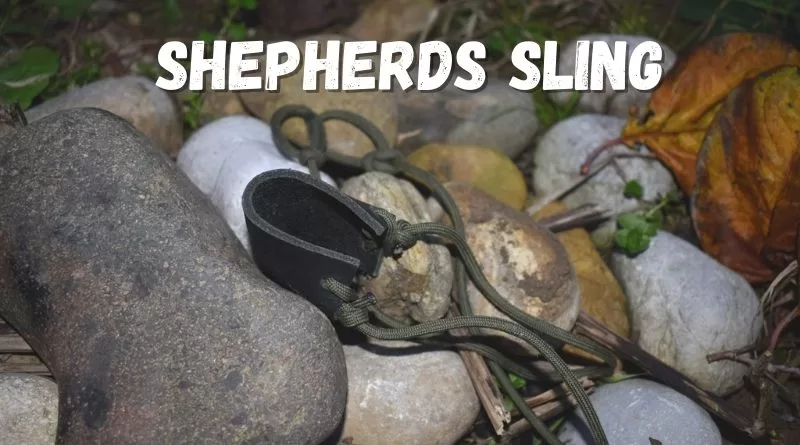
Stick Sling
The stick sling was probably invented around the same time, it works on the same principle as a trebuchet. Accept that instead of a counterweight, the power behind throwing the stone is a person. Use a shepherd’s sling, and tie one end of the cord firmly about 2 inches from the end of a stick. Slip the loop end over a groove at the end of a stick. Aim, then, swing the stick overhead at the target. The loop end should slip off the stick and the stone will fly toward the target with greater force than a shepherd’s sling.
Slingshot
Modern-day slings are called slingshots, they come in many shapes, sizes, and designs. From the humble carved-out-of-wood Y frame. To the metal and plastic slingshots that come with forearm support for extra stability. Modern-day slingshots use rubber bands or rubber tubing to propel a projectile at a target. They can be very effective hunting tools for small games.
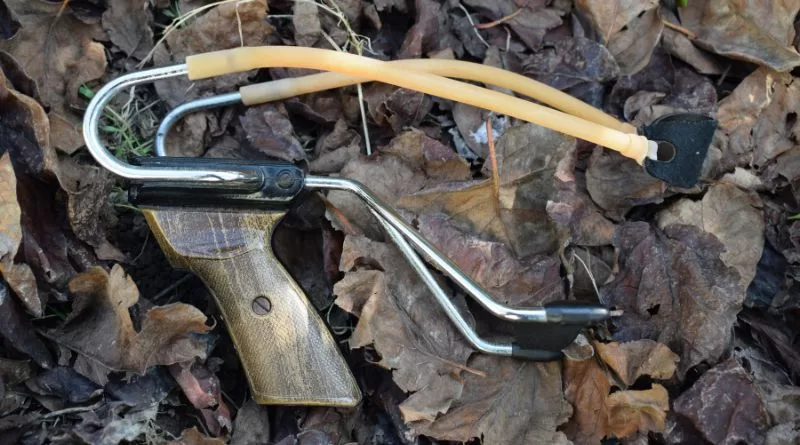
Stick
For ages sticks were used as primitive weapons for hunting. Just as abundant as stones. Sticks are more versatile as they are easier to shape then stones. They can be fashioned into clubs, spears, boomerangs, or just thrown as they are.
Boomerang
Whenever someone mentions boomerangs, the first thing that pops into a person’s mind is a boomerang being thrown. Flying in a wide circle and returning to the thrower. But the truth is, the boomerangs’ origins are humbler. They were originally just well-crafted throwing sticks that were shaped for maximum distance and accuracy.
In fact, until fairly recently the majority of boomerangs were not meant to return. They were meant to hit the target and either kill or stun it.
Club
Grab a stick with one end thicker than the other, and voila instant club. Carve and shape it into a cudgel or warclub. Tie a rock on the end and turn it into a hammer or even an axe.
Spear
Find a straight stick, sharpen the end and you have a stabbing weapon. Throw the spear and you have a javelin. Sticks can be used at medium range, to long range. Split the ends into 3 or 4 sharp tips to make a spear for fishing. (Some people define a javelin as thinner and lighter than a spear, although there are no specifications to differentiate them).
Heat Hardened Spear Head
Harden the spearhead over a fire. Choose your wood carefully. Hardwoods like oak, maple, hickory, and ash. The process of heating the wood over a fire removes all the moisture. Think of the difference between a fresh French loaf and a stale dry French loaf. Well, wood is much tougher than a French Loaf.
Sharpen the tip of the spear. Keep the spear above the flames and keep turning it. The wood is going to char a little but that’s ok. Pretend you are roasting a chicken over the fire once it’s a nice golden brown like a well-roasted chicken. It should be done. If it’s singed, a little just polish that off using a stone. To finish off the spear, rub some animal fat or oil into the wood. The fat/oil will keep the spear tip hard but not brittle.
Spear Tips
To make a spear more durable and effective at piercing a target, fasten a spearhead. Spearheads can be made from a variety of materials. Stone, Flint, Bone, etc.
Atlatl and Dart
Throwing a spear with sufficient force to kill large game is doable. But an even more effective and powerful way to throw a spear long distances is by using an Atlatl. An atlatl is to a spear what a sling is to a stone. A device created to extend the power, range, and accuracy of a thrown spear.
An atlatl is a piece of wood about the length of a person’s arm (when used with an atlatl, a spear is called a dart). At the end of an atlatl, there is either a hook or a cup. This is used to hold the dart steady before it is propelled at its target.
Using an atlatl is similar to throwing a spear, use an overhead throw, hold the atlatl firmly and the dart (spear) with the forefinger and thumb. As you launch the dart, let go of the dart and use the leverage of the atlatl to throw the dart with more power.
Bow And Arrows
A professionally crafted bow is a thing of beauty. But to hunt small game you do not need a professionally crafted bow and arrows. It just needs to be able to shoot an arrow in a straight line with enough power to down the prey. A simple bow is just a piece of wood with enough flex to give the bow string sufficient tension to propel an arrow far enough to kill your prey.
Blowpipe
Used by indigenous people from various countries around the world with great effectiveness. A blowpipe can in the right hands be a deadly and highly effective hunting tool. Unfortunately crafting one with primitive tools and natural materials requires quite a lot of skill. Blowpipes are precision devices. Making a blowpipe at home is much simpler. Use a PVC pipe to make a DIY Blowpipe
To see how effective a blowpipe can be. Search YouTube for *Hunting Big Game With A Blowpipe*, I would have posted a link but it may be a bit too graphic for some audiences. So search YouTube at your own discretion.
Bolas
The Inuit use the bolas to entangle the legs or wings of the bird. Making a bolas is easy. Traditionally a bolas consists of 3 cords and weights. One of the cords will be longer and have a lighter weight on the end. When a bolas is thrown, the two heavier shorter cords fly parallel, and the longer lighter weighted cord trails behind. Once one of the heavier shorter cords hits the leg or wings of a bird, the lighter longer cord will whip around and entangle the prey.
The Bolas makes an effective weapon for hunting other larger prey. The Gauchos used the bolas to take down game and even their own cattle.
Knife
A knife is probably the most basic and versatile primitive hunting and survival tool. Use a knife to make other hunting tools from natural materials. Such as some of the ones listed above.
Knapping
Knapping is the art of shaping different types of stones into tools such as knives, axe heads, arrowheads, etc. Stones commonly used for knapping are Flint, Jasper, Obsidian, and Novaculite. For a more comprehensive list of suitable stones click on this link AncientCraft.co.UK
I haven’t mastered the art of flintknapping, but it sure does look like a great skill to have.
Primitive Weapons For Hunting
Learning how to make primitive weapons for hunting is not that difficult. Learning to be proficient at using them is a different story. It takes 100s of hours of practice to be able to use them with any degree of efficiency. If the aim is to be able to hunt with them.
